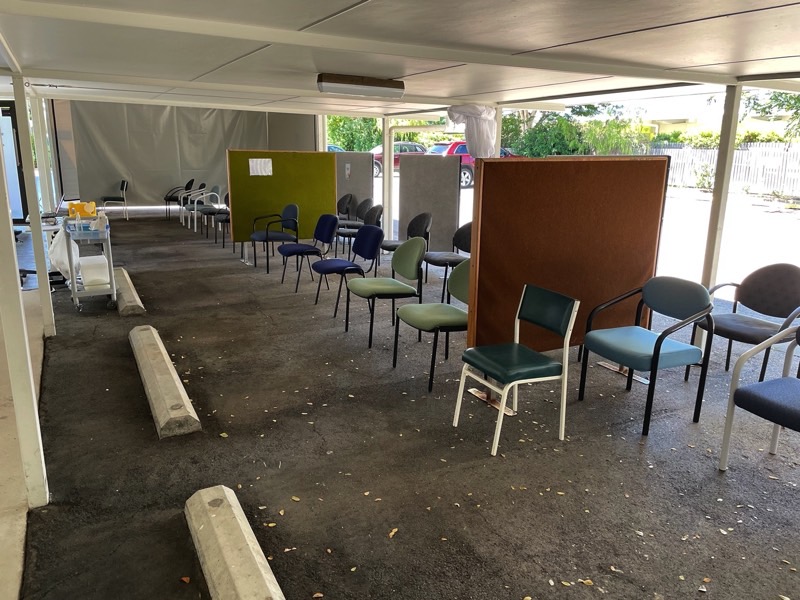Looking at vax funding and delivery options
By the AGPA team
Practices in Australia were inundated with calls last week from people seeking the vaccine as part of the 1b roll-out.
That prompted practices to express concern about communications between practices and the government and funding options.
It has been described as one of the biggest logistical exercises in Australia for decades: the roll-out of the Covid vaccine to the entire Australian adult population in seven months. GP practices will be at the forefront. They must not be taken for granted.
More than 5000 practices have agreed to take part out of altruism and concern for their patients, because they are certain to do so at some cost of time, effort and money.
The first vaccination will be billed at $30.75 and the second at $24.25, in most cases probably not enough to cover costs.
Practices are confronted with a number of options on how best to provide the vaccination service efficiently but without it being too much of a financial burden in light of Medicare requirements that a doctor must still be available on the premises even if nurses are doing the actual vaccinating.
Given the load of non-vaccination work, many might have to turn to after-hours vaccinations. This could present difficulties.
Sole practitioner practice owners will find it difficult to ramp up the roll-out because it would be impossible for one person be present for a significant amount of after-hours work.
As things stand, all GP delivery of the vaccine is going to go through the MBS and the vaccination fee will go to a doctor with a Medicare provider number. That doctor would then pay whatever amount they had contracted for use of practice facilities.
The economics of this mean that most practices are using an approach where the vaccines are being delivered using the provider number of a GP Practice owner (Practice principal)
Multiple-Principal practices have the advantage of several director-practitioners spreading the after-hours load by having one of the Principals present and employing nurses to do the vaccinations. They could do say 400 vaccinations a week over the weekend and some evenings. Practices where there is enough room on the premises can run a vaccination clinic in normal hours while Principals still carry a normal practice caseload. Some ingenious approaches have been developed to allow this to happen.
However, it is much more difficult for an owner of several or more practices with a single owner doctor. That owner cannot be in several places at once and so would have rely on the presence of the contractor doctor in each practice during vaccine time. Given the fee splitting arrangements that would be an expensive way for the practice owner to deliver the vaccination. Perhaps, more expensive than it is worth.
To encourage a faster, more efficient roll-out it would be better to have a hybrid system under which practices could elect to use the MBS or to have the practices paid directly. Under a direct funding model an employed AHPRA registered practitioner could be used to keep costs down.
The advantage of the MBS funding model for vaccine delivery is that it fits with current contracts and remuneration processes so that Practices can the confident of the tax and employment implications of the program. It is reasonably scalable to cope with increasing volumes.
The advantage of a directly funded model is that it will suit practices where there is a single Principal and little scope to operate vaccination clinics during normal hours. It may be easier to develop scalable approaches to vaccine delivery which will be able to cope with increasing volumes of vaccine as they become available.
The Federal Government should work the funding issues through with General Practice stakeholders to that end.
Commonwealth respiratory clinics, which have been doing the bulk of Covid testing, would, of course, continue to play a part.
That combination is going to be quicker than waiting for the states to set up their own clinics from scratch using town halls or other public facilities, and has the advantage that most people will visit their own GP clinic to receive the vaccine. .
The Australian roll-out will at first use imported vaccines and then the Australian manufactured AstraZeneca vaccine will be used in addition to other imported vaccines.
AstraZeneca announced this week (ends 27 March 2020) the results of a primary analysis of its phase three clinical trials in the U.S. showing that its vaccine is 76 percent effective at preventing COVID-19 and 100 percent effective against severe cases.
Earlier the US National Institutes of Health expressed concern that AstraZeneca had released interim data that was “outdated and potentially misleading” from the trials. Those results showed an efficacy of 79 percent.
The study did not find any increased risk of blood clots or other serious safety concerns.
Australian authorities have said the vaccine is safe and efficacious.
It will be an enormous effort for practices throughout Australia to deal with the extra work and to ensure their other patients are looked after.
In 2020 testing rates for cancers, heart conditions and other diseases fell because of patients’ fears of Covid. But patients should not stay away for fear that practices will be too busy to see them because of the vaccination roll-out because practices are making sure they are prepared to handle both the roll-out and existing patients.


Leave a Reply
Want to join the discussion?Feel free to contribute!